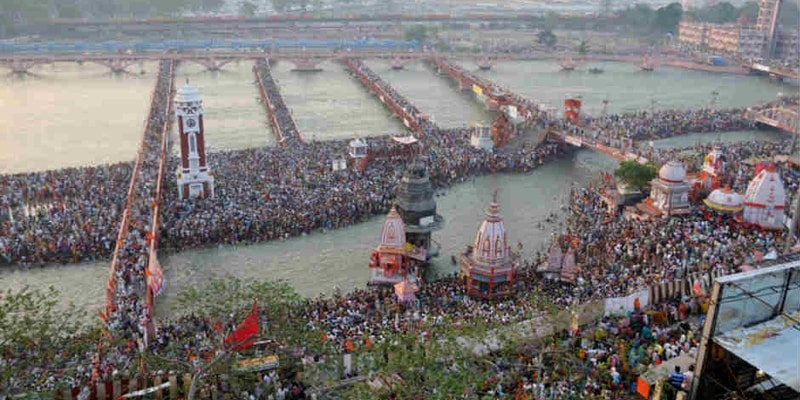Maha Kumbh Mela 2025: A Spiritual Gathering Set to Break Records!
The Maha Kumbh Mela 2025, a grand spectacle of faith and spirituality, will unfold at Prayagraj, Uttar Pradesh, from January 13 to February 25, 2025. This globally renowned festival will draw millions of devotees to the Triveni Sangam—the confluence of the sacred Ganga, Yamuna, and the mythical Saraswati rivers—for a holy dip believed to cleanse sins and grant spiritual blessings.Held every 12 years, the Maha Kumbh Mela is celebrated with unmatched fervor and devotion. Its origins are deeply rooted in Hindu mythology, tracing back to the Samudra Manthan (churning of the ocean), where drops of amrit (nectar of immortality) fell at four locations—Prayagraj, Haridwar, Nashik, and Ujjain.The World’s Largest Religious EventRecognized as the world’s largest religious congregation, the Maha Kumbh Mela draws pilgrims from across the globe. With an estimated 40 crore attendees expected in 2025, the event will be hosted across 4,000 hectares along Prayagraj’s riverbanks. The budget for the festival which is projected at ₹6,382 crore, reflects its immense scale and significance.Holy Dip: Auspicious Bathing DaysBathing at the Triveni Sangam on specific days holds profound religious significance. Mark these dates:January 14, 2025: Makar Sankranti (First Shahi Snan)January 13, 2025: Paush PurnimaJanuary 29, 2025: Mauni Amavasya (Second Shahi Snan)February 3, 2025: Basant Panchami (Third Shahi Snan)February 26, 2025: Maha Shivratri (Final Snan)March 12, 2025: Maghi PurnimaPlan Ahead: Travel and AccommodationGiven the massive influx of visitors, early planning is critical. Secure accommodation—whether tents, hotels, or dharamshalas—well in advance. Booking rail or air tickets early can also help avoid last-minute price surges and limited availability. With millions descending upon Prayagraj, preparedness will ensure a seamless experience.Prayagraj experiences chilly winters during January and February. Pack warm clothing, including inner layers, socks, scarves, gloves, and coats. Be ready for unpredictable weather changes by carrying an umbrella.Source: Google ImagesEnhanced Security and FacilitiesTo manage the massive crowds and ensure safety, extensive measures are in place. Over 2,300 CCTV cameras will monitor the event, aiding in crowd control and incident reporting. Additionally, teams will be deployed to ensure cleanliness across the festival grounds. Authorities plan to install 1.45 lakh restrooms and establish 99 temporary parking areas spanning 1,850 hectares.Ensure you bring:A valid identity cardTravel and accommodation reservationsAny necessary documentsA first aid kit, mask, and hand sanitizerImmerse in Spiritual and Cultural EnrichmentThe Maha Kumbh Mela is not just about the holy dip. Visitors can attend pravachans (spiritual discourses) by revered saints and gurus, as well as enjoy cultural events, including mythological plays, devotional music, and traditional folk dances.The festival’s administration team, supported by volunteers and police, ensures a safe and organized experience. Adhering to their instructions and traffic advisories is crucial to navigate the bustling event smoothly.The Deeper SignificanceThe Maha Kumbh Mela’s origins lie in ancient scriptures, symbolizing a celestial battle for immortality. The drops of amrit that fell on Prayagraj’s soil make it one of the most revered pilgrimage sites for Hindus. Participating in the festival is believed to be a path to spiritual liberation and eternal blessings.The Maha Kumbh Mela 2025 promises to be an extraordinary celebration of faith, culture, and humanity. With its profound spiritual significance and unmatched grandeur, it is a once-in-a-lifetime experience for devotees and visitors alike.


